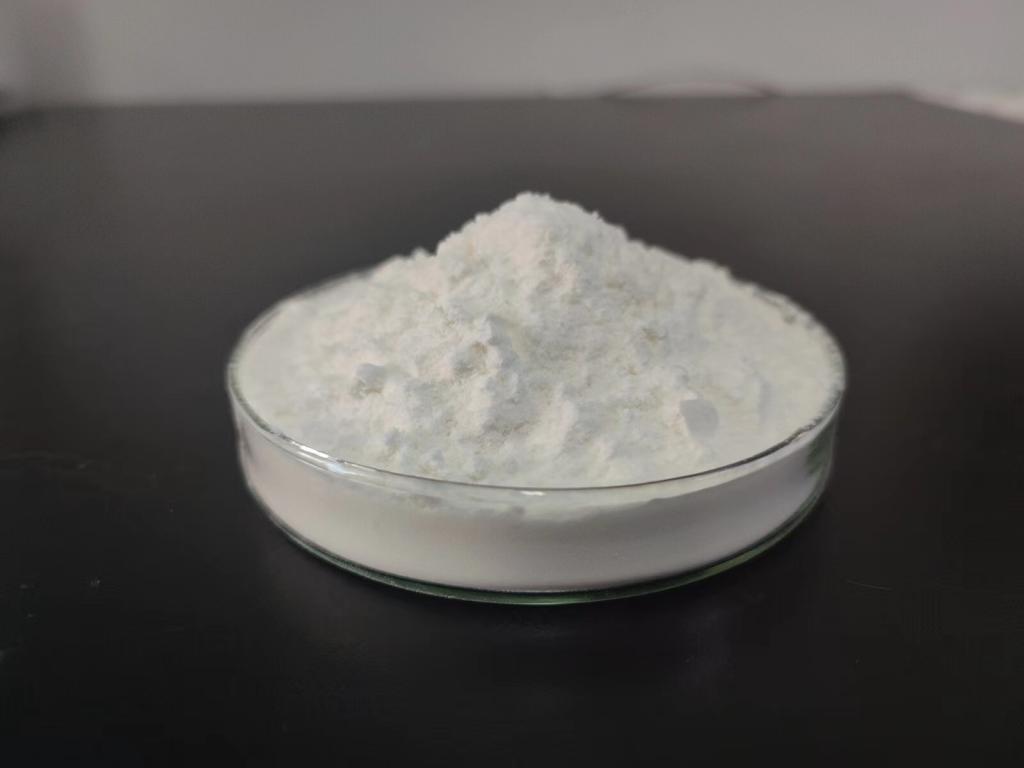Tel:0086 18231198596

News
Sustainable Livestock Farming Practices: The Contribution of ε-Polylysine Hydrochloride
TIME:2024-01-26
I. Challenges in Conventional Livestock Farming:
Antibiotic Overuse:
The conventional livestock industry often relies heavily on antibiotics for disease prevention and growth promotion. The overuse of antibiotics contributes to the emergence of antibiotic-resistant bacteria, posing a threat to both animal and human health.
Environmental Impact:
Livestock farming, particularly industrial-scale operations, can have significant environmental repercussions, including deforestation, water pollution, and greenhouse gas emissions. Sustainable practices are imperative to mitigate these environmental challenges.
II. Understanding ε-Polylysine Hydrochloride:
Natural Origin and Production:
ε-Polylysine is a naturally occurring antimicrobial peptide produced through the fermentation of Streptomyces albulus. In its hydrochloride form, ε-Polylysine Hydrochloride is water-soluble and exhibits potent antimicrobial properties.
Antimicrobial Activity:
ε-Polylysine Hydrochloride acts as an antimicrobial agent by disrupting the cell membranes of bacteria. Its broad-spectrum activity makes it effective against various pathogens, offering a natural alternative to traditional antibiotics.
III. Contributions of ε-Polylysine Hydrochloride in Sustainable Livestock Farming:
Disease Prevention and Control:
a. Replacement for Antibiotics:
ε-Polylysine Hydrochloride can serve as a viable replacement for antibiotics in preventing and controlling diseases among livestock. Its antimicrobial properties contribute to a healthier environment without the associated risks of antibiotic resistance.
b. Reduction in Antibiotic Dependency:
By incorporating ε-Polylysine Hydrochloride into livestock feed, farmers can reduce their dependency on antibiotics, minimizing the selective pressure that contributes to the development of antibiotic-resistant strains.
Improved Animal Health and Welfare:
a. Enhanced Gut Health:
The inclusion of ε-Polylysine Hydrochloride in animal feed has been shown to promote gut health. A balanced gut microbiota is crucial for nutrient absorption, digestion, and overall well-being of livestock.
b. Stress Reduction:
Livestock often face stressors in crowded or intensive farming conditions. ε-Polylysine Hydrochloride's potential to mitigate the impact of stress on animals contributes to improved welfare, promoting healthier and more resilient livestock.
Environmental Impact Mitigation:
a. Reduced Antibiotic Residue in Manure:
As ε-Polylysine Hydrochloride is naturally degraded, it minimizes the risk of residues in animal manure, which can contribute to soil and water contamination. This reduces the environmental footprint associated with antibiotic use in livestock.
b. Lowered Ammonia Emissions:
Livestock operations are major contributors to ammonia emissions, which can have adverse effects on air quality and ecosystems. By promoting healthier gut conditions, ε-Polylysine Hydrochloride may contribute to lower ammonia emissions from livestock.
IV. Applications in Different Livestock Sectors:
Poultry Farming:
a. Prevention of Avian Diseases:
In poultry farming, where disease outbreaks can be devastating, ε-Polylysine Hydrochloride can be used to prevent and control avian diseases. Its antimicrobial activity contributes to maintaining a disease-free environment.
b. Reduction in Antibiotic Use:
The poultry industry often relies on antibiotics for disease prevention and growth promotion. The inclusion of ε-Polylysine Hydrochloride in poultry feed offers a sustainable alternative, supporting the industry's efforts to reduce antibiotic use.
Swine Farming:
a. Gut Health Promotion:
Swine farming can benefit from ε-Polylysine Hydrochloride's promotion of gut health. Improved digestion and nutrient absorption contribute to overall pig health and growth.
b. Antibiotic Alternatives in Piglet Nutrition:
In piglet nutrition, where the prevention of diseases is crucial, ε-Polylysine Hydrochloride can be incorporated into feed formulations as an alternative to antibiotics, supporting the health of young pigs without contributing to antibiotic resistance.
Ruminant Farming:
a. Methane Emission Reduction:
Livestock, especially ruminants, contribute to methane emissions, a potent greenhouse gas. While more research is needed, ε-Polylysine Hydrochloride's potential to improve digestion and reduce stress may contribute to lower methane emissions from ruminants.
b. Sustainable Dairy Farming:
In dairy farming, where udder health is paramount, ε-Polylysine Hydrochloride can be explored as a natural solution for preventing and controlling mastitis, a common bacterial infection affecting dairy cows.
V. Challenges and Considerations:
Feed Formulation and Palatability:
The formulation of livestock feed containing ε-Polylysine Hydrochloride requires careful consideration of palatability and acceptance by animals. Research should focus on optimizing feed formulations that ensure both efficacy and acceptance.
Cost-Benefit Analysis:
Livestock farmers often make decisions based on economic considerations. Conducting comprehensive cost-benefit analyses will be crucial to demonstrate the financial viability of incorporating ε-Polylysine Hydrochloride in livestock farming practices.
VI. Case Studies and Success Stories:
Farms Implementing ε-Polylysine Hydrochloride:
Examining case studies of livestock farms successfully implementing ε-Polylysine Hydrochloride provides practical insights into its application, efficacy, and the potential benefits for both animal health and sustainable farming practices.
Industry Collaboration:
Collaborations between ε-Polylysine Hydrochloride producers, researchers, and livestock farming industry stakeholders can contribute to the development of best practices and the successful integration of this natural antimicrobial agent in diverse farming operations.
VII. Future Directions and Research Opportunities:
Formulation Innovation:
Research should focus on developing innovative formulations of ε-Polylysine Hydrochloride for different livestock sectors, considering factors such as stability, bioavailability, and ease of incorporation into feed.
Large-Scale Studies and Long-Term Effects:
Conducting large-scale studies and assessing the long-term effects of incorporating ε-Polylysine Hydrochloride in livestock farming are essential for validating its sustained benefits, safety, and overall impact on sustainable practices.
VIII. Conclusion:
ε-Polylysine Hydrochloride holds substantial promise in contributing to sustainable livestock farming practices by addressing challenges related to antibiotic use, disease prevention, and environmental impact. As the livestock industry navigates the path towards greater sustainability, embracing natural alternatives like ε-Polylysine Hydrochloride represents a positive step towards achieving a harmonious balance between animal welfare, environmental stewardship, and the production of high-quality livestock products for a growing global population. Continued research, industry collaboration, and adoption of innovative practices are essential for realizing the full potential of ε-Polylysine Hydrochloride in sustainable livestock farming.

 CONTACT
CONTACT




